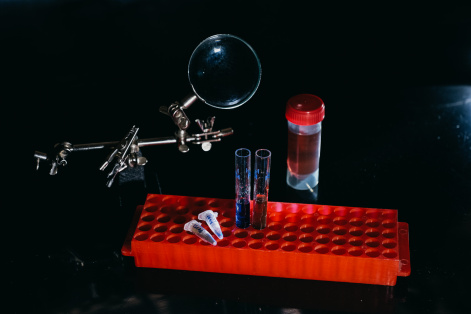Magnetic nanoparticles in a carbon shell can be used to purify water from organic dyes
11 March 2022 г.

The deterioration of water quality, its pollution with various compounds is one of the threats facing humanity. Dyes form the main group of chemicals polluting aquatic ecosystems. They are contained in the effluents of various industries - textile, leather, cosmetics, paper, etc. Many laboratories in the world are working on the creation of efficient inexpensive materials capable of withstanding numerous cycles for water treatment, including those based on magnetic nanoparticles. Particular attention to them is associated with the possibility of removing nanoparticles that have absorbed pollutants from water using a magnetic field.
An international team of scientists from Russia and Taiwan modified the properties of magnetic nanoparticles by coating them with two layers of carbon. According to the researchers of the Krasnoyarsk Science Center of the Siberian Branch of the Russian Academy of Sciences, the first layer of carbon was formed in a one-stage process directly during the synthesis of the magnetic nanoparticles themselves by thermal decomposition. The second layer of carbon was deposited by treating these particles in a glucose solution. One of the advantages of the obtained material is the large magnetization value, which significantly exceeds the data presented in the literature. The greater the magnetization of the particles, the smaller is the magnetic field needed to extract them from water.
An interesting phenomenon was also discovered: as a result of processing in glucose, the nanoparticles began to spontaneously combine into large stable conglomerates of the same regular shape and size.
“A feature of these nanoparticles is a combination of high adsorption capacity of a thick carbon shell with a high magnetization value of the magnetic core. This can improve their performance or provide new properties useful for various applications. One of the most important is their use to adsorb pollutants from water. We carried out detailed studies of the mechanisms and kinetics of adsorption of a number of organic dyes from aqueous solutions and revealed which type of dyes is most effectively absorbed by the studied nanoparticles. We attribute the unexpectedly discovered phenomenon of nanoparticles self-assembling into large regular-shaped conglomerates to the fact that glucose molecules dissolved in water serve as a framework for particles accumulating around them, covered with a single-layer carbon shell,” said Oksana Ivanova, Candidate of Physical and Mathematical Sciences, researcher at the L.V. Kirensky Institute of Physics FRC KSC SB RAS.
The study was supported by the Russian Foundation for Basic Research (No. 19-52-52002) and the Ministry of Science and Technology of Taiwan.
Share:
